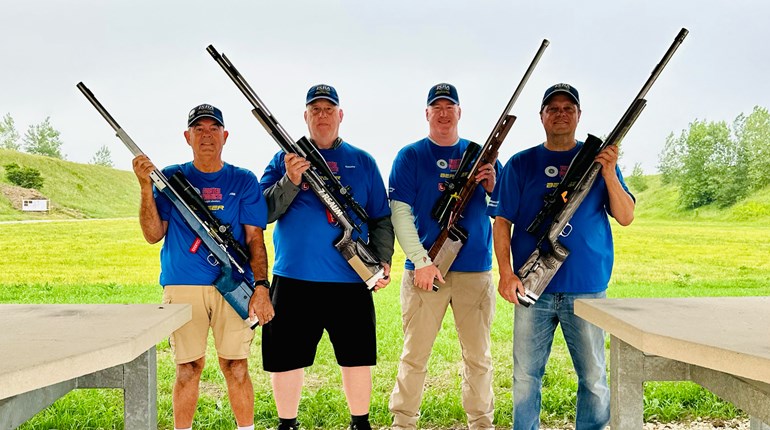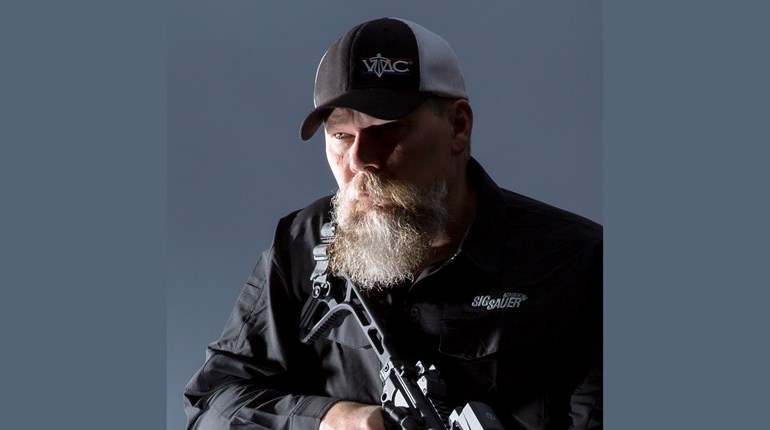
“Scores which have stood for years as the acme of accuracy were shamed before the straight shooting this year at Perry, and if that were not enough, The Wimbledon was won by that total hitherto regarded as almost impossible of achievement—a Possible Score.”
—Arms and the Man, September 1920
This year’s National Matches were again conducted at Camp Perry, marking the eighth time in the event’s 16-year history that shooters traveled to Ohio. And while Camp Perry had been home to more National Matches than any other locale, the site selection process was still one of invitation and review. At the National Board’s January meeting, Governor Cox of Ohio offered Camp Perry for the National Matches via Gen. Layton, who, as the state’s adjutant general said, “We can assure to the riflemen of the country a hearty welcome and the fullest cooperation if our invitation is accepted.” Another formal invitation was extended by Lt. Col. Harllee, the Executive Officer from the 1919 matches at Caldwell, New Jersey. Harllee, on behalf of a Florida committee unable to attend the meeting, offered Jacksonville as the National Match site.
Discussions also took place as to whether the National Matches should be held elsewhere, such as in the far West, but no other formal invitations were issued. And when the site selection was put to a vote, seven nods were cast for Camp Perry to just three for Florida, with Col. Morton Mumma chosen to oversee the matches, just as he had two years prior when he ushered in the Small Arms Firing School.
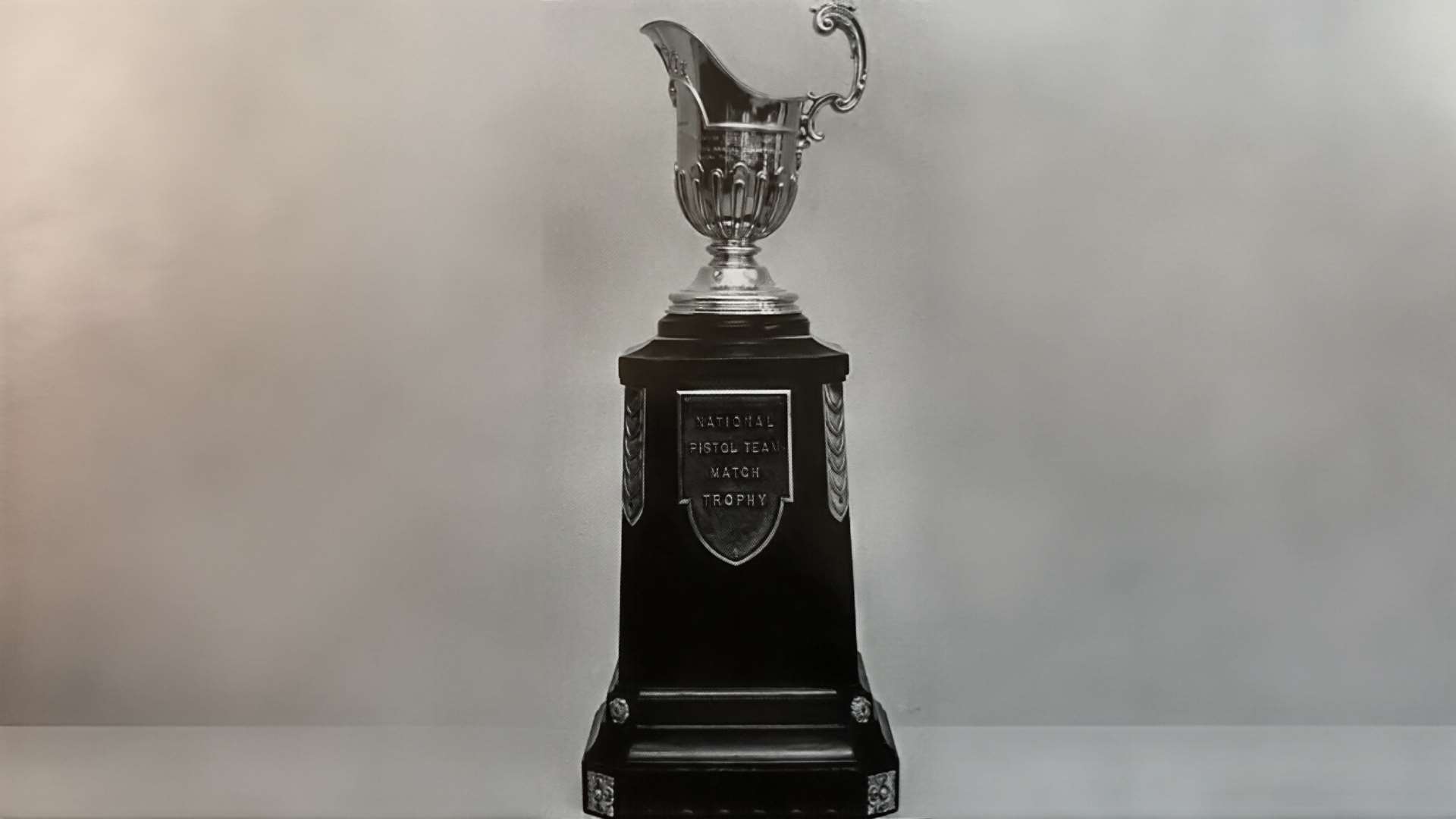
One of Mumma’s proposals this year was to give civilian teams a flat travel reimbursement (five cents a mile was granted) in lieu of the more tedious and confusing voucher system that had been in place. Mumma also suggested increasing the number of national team members from 17 to 18 to allow for a range officer to help run the matches, an obvious extension of his penchant for Small Arms Firing School training and its subsequent trickle-down effect on shooters across the country. Another method of dispersing knowledge more effectively once teams were back home was to remove the restriction whereby National Guard officers above the rank of major were not allowed to captain teams. And all team members who had not previously attended a National Match were required to attend the Small Arms Firing School and were subject to paying for their own transportation and meals if they did not participate.
Under the watchful eyes of Ordnance Officers, Capts. Julian Hatcher and Glen Wilhelm, the selection of National Match arms and ammunition was considered the best to date. Wilhelm even participated in some National Match events to experience firsthand the results of his and Hatcher’s research and labor. This effort, coupled with the employment of elimination shoots for the selection of National Match team participants and the overall growing popularity of shooting in general, led to a pattern of record-setting scores at this year’s matches.
Among the impressive performances, which included a civilian team victory in the Herrick Trophy Match with a record Palma score and an unprecedented firing of 31 consecutive bulls at long range in the Adjutant General’s Match (900 and 1,000 yards), was the first-ever perfect score in the famed Wimbledon Match. To make the event more extraordinary, the feat was accomplished by two shooters. Both Navy Lt. Y.A. Yancy and civilian shooter W.R. Stokes fired their possibles plus another bullseye for good measure before Yancy took the title by virtue of a four to Stokes’ three on the 22nd shot.
Marine Sgt. T.B. Crawley won the Leech Cup with a perfect score plus 11 bulls and had preceded this victory with another flawless showing in the Members’ Match, to which he fired an additional nine bulls after the 10-shot course at 600 yards. Not surprisingly, Crawley, whose shooting resume included the National Individual Match title in 1919, won this year’s Grand Aggregate Match, comprising the Leech, Members, Wimbledon, Marine Corps and President’s events.
Among the Board events, a National Team Pistol Match was launched this year whereby a slow-fire stage was shot at 50 yards for the first time, followed by 25-yard firing in rapid and “quick” fire as it was referred to in the program, on the Army’s “I” target. Top honors in this inaugural event went to the five-man Marine squad which was awarded the gold cup that was won by the A.E.E. pistol team in France the year before and put into National Match competition as the Snyder Trophy, named for the A.E.E. team captain. The fact that the national pistol competition was limited to the Army’s Model 1911.45 caliber automatic caused some debate since the NRA’s matches allowed any revolver or automatic of .38 caliber or larger, with the ability to change guns between distances. Prior to the start of the matches, an editorial in Arms and the Man advocated policy that encouraged flexibility and experimentation: “The National Matches are not held to the glory of the already expert shot, but were instituted as the common meeting ground.”
The Marines dominated pistol competition this year as one of their own also topped the Board’s individual field, but their bragging rights on the rifle range were squelched by the Infantry, which finished first in the National Team Rifle Match field of 65. Team member Sgt. H. Whitaker also won the National Individual Rifle Match. This year’s course of fire saw the return of shooting prone at 600 yards and Target D, which replaced the short-lived changing position fire on Target B at 500 yards featured in 1919 at Caldwell.
With the NRA’s nine-event pistol program and the addition of the National Team Pistol Match, the popularity of the handgun was evident and the outlook for the sport looked very promising. Enthusiasm among the competitors this year required that practice sessions be squadded and post-match discussions included favoring the Standard American 50-yard target over the Army “I” target with its smaller bullseye. Other formative dialogue addressed the separate classification of the .22 caliber pistol from higher caliber models.
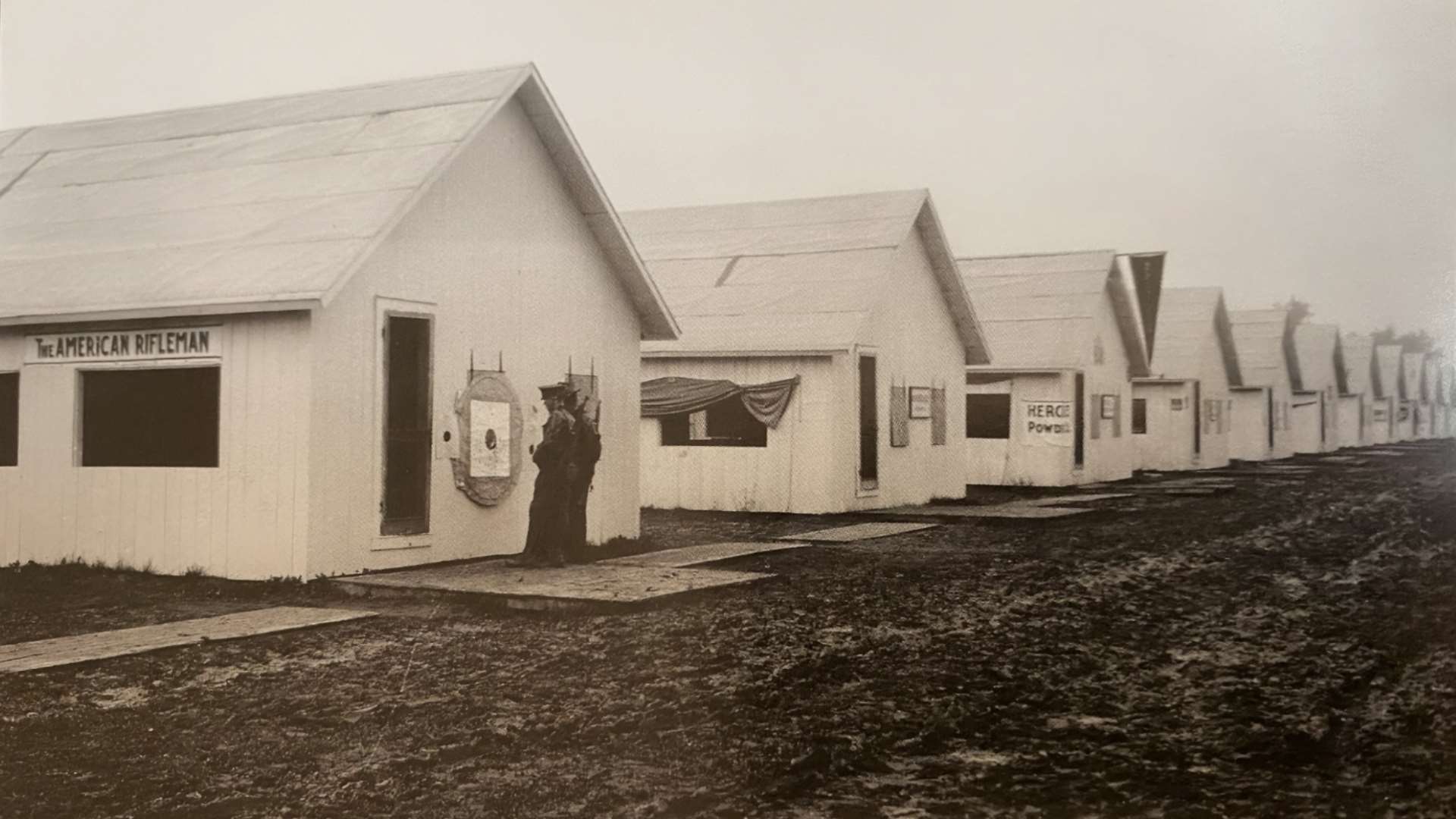
If the excitement surrounding the pistol matches could have been matched or surpassed, it was done on the smallbore range throughout the nearly three-week span that the .22 rifle events were held. More than 200 veterans and newcomers took to the smallbore line for the unlimited matches and squadded competitions that amassed more than 2,700 entries.
Using the 1919 National Matches as a springboard, the NRA promoted smallbore in a big way, and based on his demonstrated expertise, Edward Crossman was again appointed to conduct the national program of .22 caliber events. In the weeks leading up to the matches, Arms and the Man ran the entire match bulletin that contained every condition placement of smallbore targets at the far left of the 1,000-yard facility on land that bordered the Erie Proving Grounds. The smallbore firing points consisted of hard packed dirt under a 100-foot long wooden sheller—a finishing touch to a series of accommodations meant to boost the smallbore game at Camp Perry and inspire enthusiasts at the club level across the country.
Competitors still had to fit smallbore shooting in between the center fire matches, but the range was open at all times, which made it a moot point. The smallbore program consisted of eight reentry, or sweepstakes, matches where one could fire as often as he or she liked. (The program welcomed female competitors through special advertisements) Three of the four squadded, or single-entry, matches comprised a Grand Aggregate similar to the inaugural matches of 1919 and oddly enough, the national championship was again determined by a single fired match—the Smallbore National Individual—which was a Dewar course fired with metallic sights.
Improvements made by smallbore shooters were evident as possible scores were fired at 100 yards compared to none at Caldwell in 1919. And the total of three possibles fired at 50 yards the previous year increased eight-fold to 24. In the Grand Aggregate, L.E. Wilson of the Marines fired a 690x700 to edge out Army Capt. W.H. “Cap” Richard by three. On his way to the win, Wilson poetically won the Marine Corps Match, an any-sight, half-Dewar course, with a perfect 200. Both Wilson and Richard fired Winchester 52 rifles and Winchester Precision ammunition. Two Connecticut riflemen, P.E. Littlehale and J.E. Rivers, finished first and second in the Smallbore Wimbledon with respective scores of 100 and 99. The national individual title, however, was determined after Richard’s higher score over Wilson at 100 yards in the Smallbore National Individual Match was used to break their 394 tie.
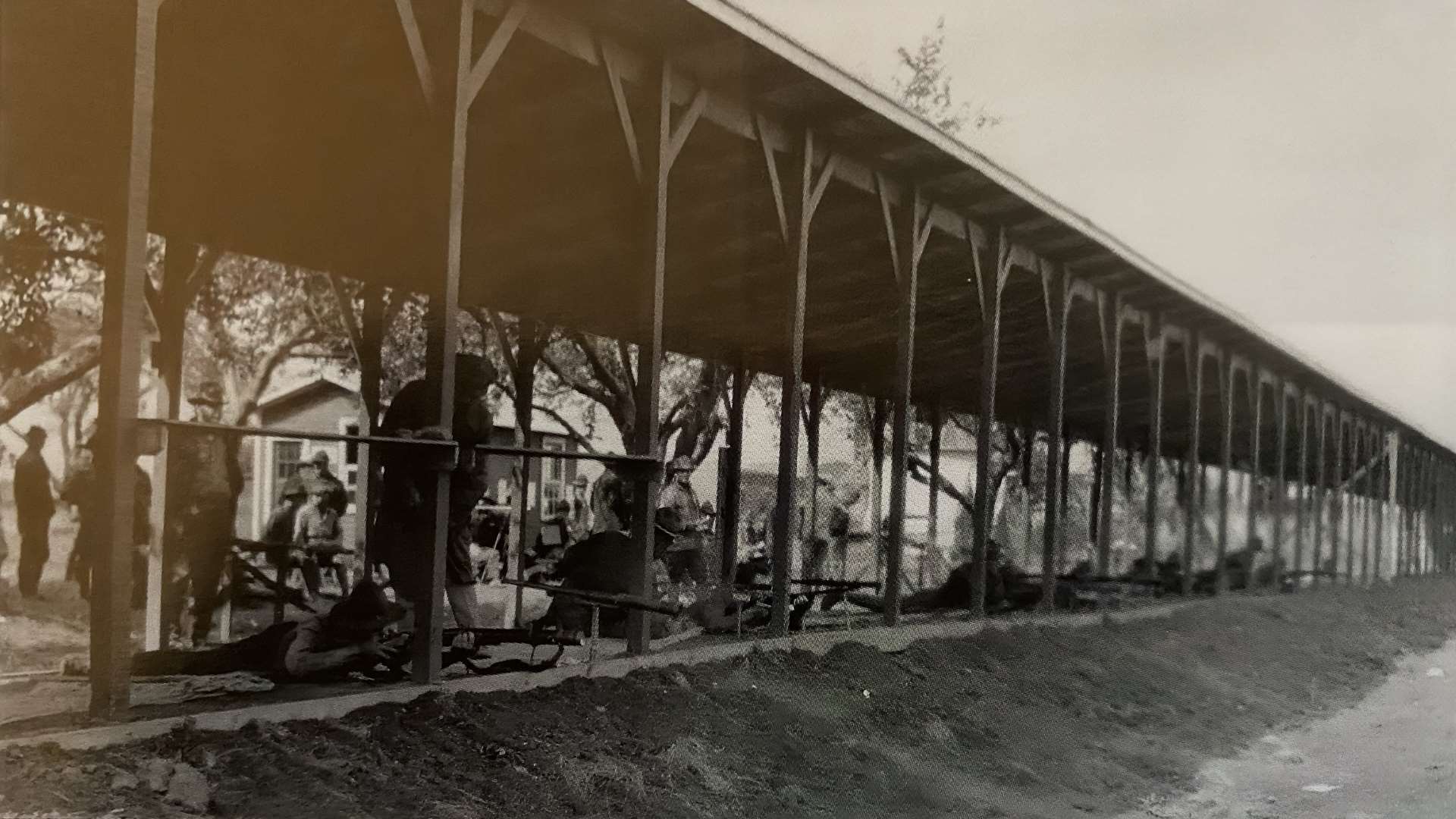
The culminating event of the smallbore program was the Dewar Trophy Match, where no sighting shots were allowed and prospective competitors were reminded to sight in by entering any of the several reentry matches. The select U.S. shooters took on the British in order to hang onto the Dewar Trophy, which had been in their possession since before World War I when it was shot as a gallery match. The trophy returned to competition in 1919 after a four-year hiatus caused by the war and U.S. representatives had no desire to build a shipping crate. Almost as soon as the 1919 National Matches had ended, there was a tremendous build up for this year’s contest, which resulted in another U.S. victory, thereby keeping the Dewar Trophy on its stand in the Office of the War Department in Washington, D.C.
The smallbore schedule of sweepstakes events included many innovative matches such as the “Egg Pool” where shots were fired at two-inch breakable disks at 100 yards. The entry fee was 10 cents per shot and each broken disk was worth a point with the cash collected divided equally among the total number of “broken tickets.” The “Unknown Score” Match featured 10 shots at 100 yards. The winner was the one who came closest to matching a predetermined score between 70 and 100 that was held in a sealed envelope. A score made in any other match could have been used as long as a ticket for the “Unknown Score” Match was purchased and affixed to the target prior to firing. In the “Hunter” Match, shooters had one minute to fire unlimited rounds at 20 two-inch breakable disks 100 yards downrange.
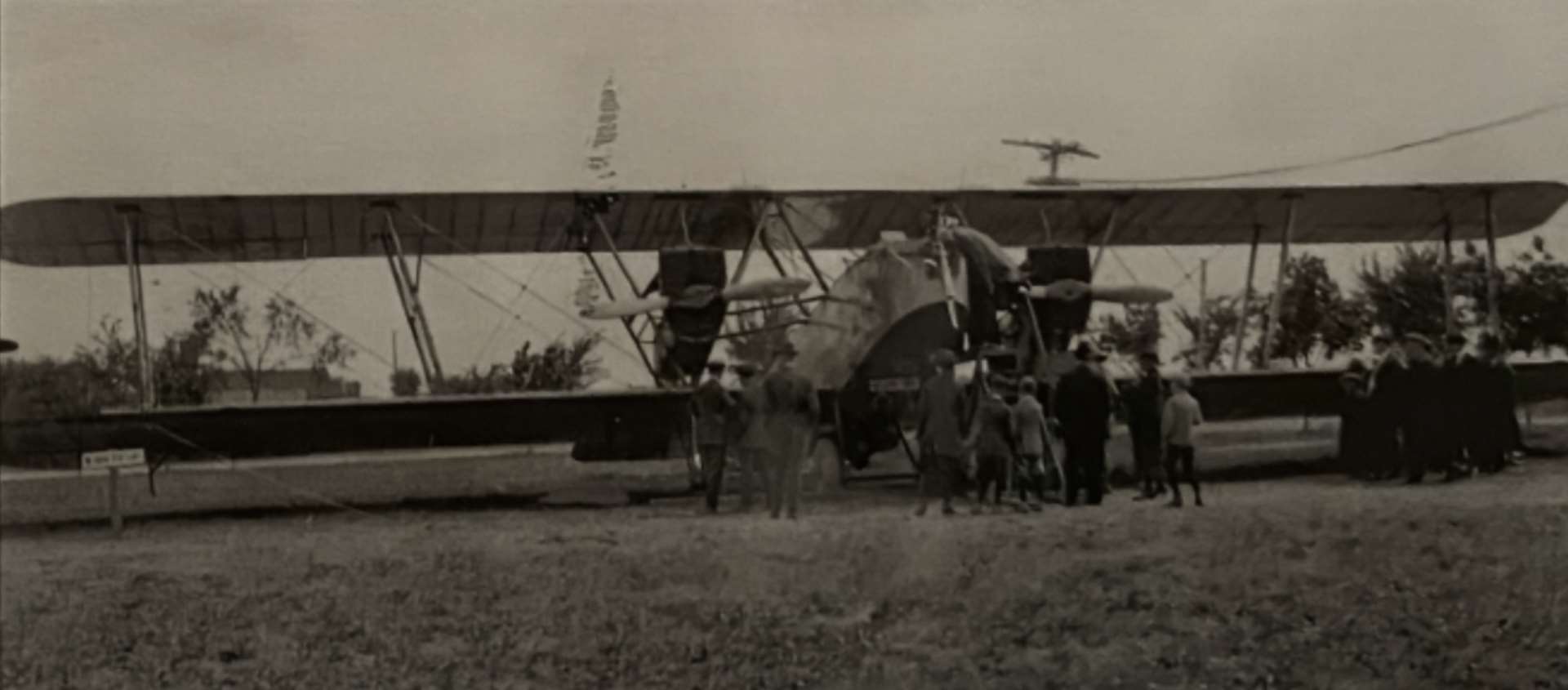
Probably one of the most novel of all events in the history of the National Matches was this year’s Airplane Match. Approximately two weeks of demonstrations preceded the competition, which was held on the 1,000-yard range and conducted by Capt. Walter Lawson, the designated Officer in Charge of Aerial Firing. Air crews consisted of pilots and gunners who competed as teams and fired on their own targets, each similar in design. The winning team among the five crews was from nearby McCook Field in Dayton, Ohio. Second Lt. Oakley Kelly and Sgt. William Steckle flew a DeHaviland airplane and recorded 295 direct hits for a score of 906, outscoring by far the second place squad’s 169 hits for 462 points. Besides the DeHavilands used in competition, other planes that participated in demonstrations included a Fokker D-7, Martin GMC, USD-9A, SE-5A and three Curtiss JN-4s.
A benefit to having aviation apparatus on the grounds during the National Matches this year came in the form of special prizes for all match winners—they received flights over Camp Perry and the surrounding area courtesy of the Air Service Detachment.
Without question, the advent of supplemental events and the expansion of the program added to the interest and enthusiasm surrounding the evolution of the National Matches and the promotion of marksmanship. In fact, as smallbore and pistol competitions developed footholds in the program, reports and comment during this period strongly suggest that 1920 is when the term National Matches unofficially began to be used inclusively to promote and refer to both National Board and NRA contests.













